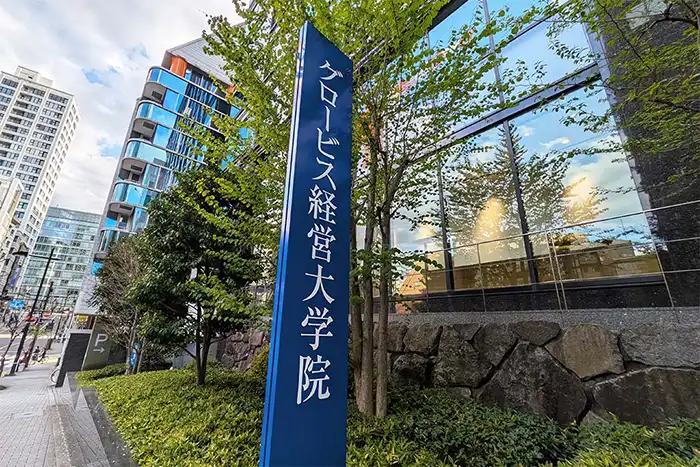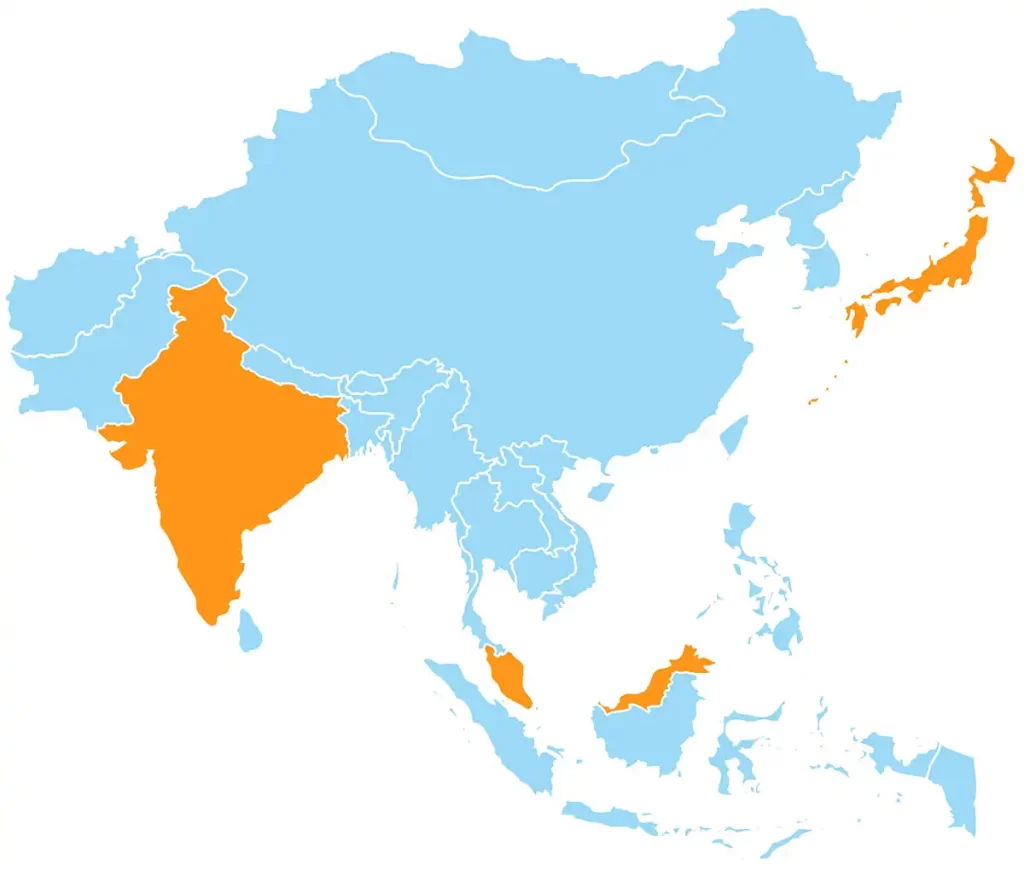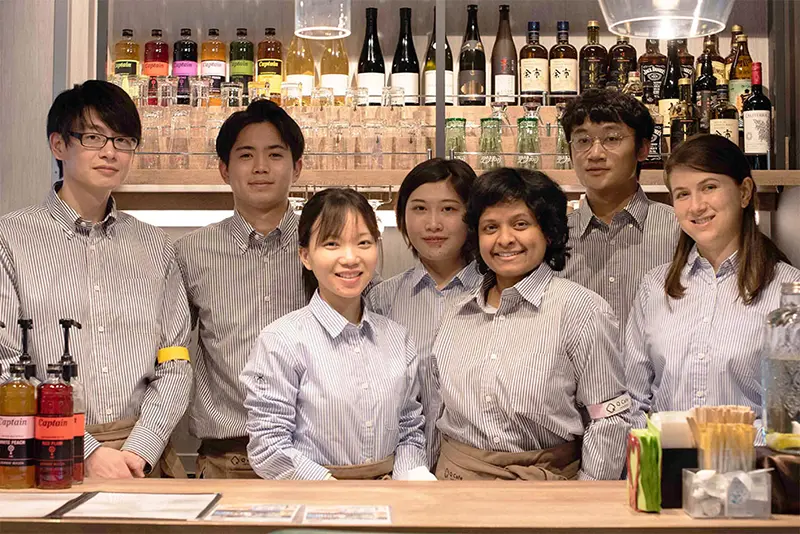Case Study
Unifying a Global B2B Marketing Strategy
Company: GLOBIS Corporation (Tokyo, Japan)
Sector: corporate training, e-learning
My role: Senior Product Marketing Strategist
01.
Challenge
Background
GLOBIS Corporation is a leading corporate training provider in Japan, boasting 88% of the companies in the Nikkei 225 stock market index as clients.
However, despite the company’s success in Japan, its global services were performing below expectations.
When I joined the global B2B team as a Senior Product Marketing Strategist, I wanted to change that.

Hypothesis
As a newcomer to global markets like North America and Europe, it was no surprise that GLOBIS faced stiff existing competition.
When I joined the team, each B2B product had its own, siloed marketing operations. I hypothesized that this fractured approach was weakening our global expansion.
A user new to the GLOBIS brand would have a difficult time navigating the many separate websites to understand our value proposition and which product was right for their needs.
Research & Analysis
My first priority was to understand as much about GLOBIS’s global B2B situation as possible. To do so, I embarked on the following research projects:
Primary
I analyzed sales and marketing data from all of our regional teams in the United States, Europe, and Southeast Asia. I wanted to know which services were performing best, in what markets, and why.
Secondary
I led extensive desk research into target market conditions. Who were our major competitors? How were they positioned? What topics were currently trending in corporate training?
Conclusion
I verified that the e-learning markets were saturated with existing competition in most of our target regions. However, hybrid corporate training (live instruction + e-learning) showed white spaces that we could exploit – with a change in marketing strategy.
Here’s how I created that change.
02.
Action
Unifying B2B Products
I proposed to company leadership that, in order to break into new global markets, we should introduce a single, refined value proposition. Through a series of brainstorming sessions, we developed a strategy to combine our e-learning and corporate training products into a unified B2B service.
The result was GLOBIS Corporate Solutions, which offered “borderless leadership training” for companies around the world.
I worked with leadership to merge the separate B2B marketing teams into a combined unit in an entirely new global B2B division.


Product-Market Fit (PMF)
Using my research, the new team was able to identify the most promising global markets to enter: Singapore, Malaysia, and India.
We tailored our positioning, marketing channels, and campaign messaging to each region. For example, for Singapore’s highly centralized market, we focused on in-person presentations at trade shows such as TechHR and CHRO.
Regional Hub Collaboration
With limited resources at GLOBIS HQ in Tokyo, I strengthened communication with regional hub offices.
I started by interviewing key stakeholders at our United States, Europe, and S.E. Asia hubs to understand their unique business priorities, resources, and strategic gaps.
Together, we created a marketing communications strategy and a framework for expense and profit allocation. I personally kept track of HQ’s team accounting, expense invoice processing, and monthly budget tracking.
Combined CRM Database
A major issue I discovered through my hub collaboration was our lack of a centralized marketing and sales lead database.
Collaborating with an external vendor, we introduced a combined Salesforce CRM database. To contribute, I developed the CRM’s process documentation for client mailing and lead nurturing.

Lead Nurturing
With our combined CRM in place, I managed our marketing newsletter as part of our lead nurturing strategy.
Each month I created and sent the newsletter using the Stripo and Salesforce. These emails showcased client success stories, corporate news, and the latest e-learning course and article releases.
SEO Content
Online ads were a major source of lead generation and website traffic. To bolster the efficacy of our campaigns and encourage organic discovery, we utilized written site SEO content.
From late 2024, I assumed editing duties of the GLOBIS Brief, a biweekly publication of articles covering topics highly relevant to our target DMUs.
I personally contributed this article on active empathy in leadership, an area of particular expertise.

Active Empathy: Embracing Emotional Intelligence in Leadership
Read on the GLOBIS Brief
03.
Result
Business Results
One year after proposing the unified service, GLOBIS Corporate Solutions had finally brought positive traction to the company’s global B2B expansion. Our regional hub collaboration and centralized CRM database resulted in a 15% growth in new sales leads to a combined total of 2,800 companies.
Sales increased 10% from the previous year, contributing to GLOBIS’s combined total of 800 clients and 250,000 individual learners worldwide.
Our SEO efforts paid off as well: one particularly successful article contributed over 30% of traffic to the GLOBIS Corporate Solutions in the month it was published.
What I Learned
Strategic collaboration is critical
Leveraging regional sales offices was essential in understanding global market dynamics. This collaboration reinforced the value of integrating local insights with global strategies to achieve a cohesive brand presence.
Unified brand messaging matters
The creation of a global B2B marketing unit and the consolidation of resources demonstrated the pivotal role of a uniform brand message.
This approach not only enhanced brand recognition globally but also optimized resource allocation, leading to a more efficient execution of marketing strategies.
04.
More Case Studies
Building a Brand Through Content Creation
GLOBIS Corporation
Leading Transformation in a Time of Crisis
LS Corporation

